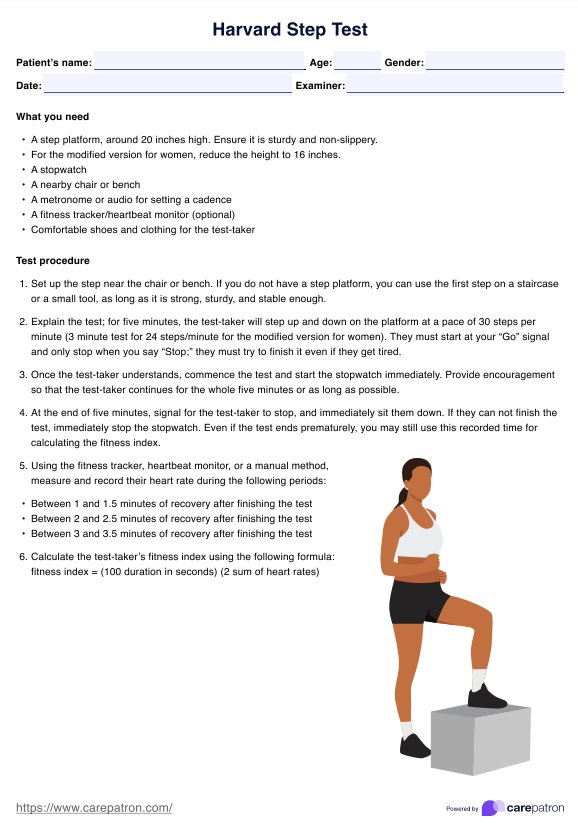The Harvard Step Test is simple, cost-effective, and requires minimal equipment, making it accessible for professionals and participants. It is excellent for assessing cardiovascular fitness and tracking progress. However, as stepping up and down can be physically demanding, it may not be suitable for individuals with joint problems, balance issues, or severe cardiovascular conditions.

Harvard Step Test
Assess the cardiovascular fitness of your client with the Harvard Step Test! Use our template to check their fitness accurately.
Harvard Step Test Template
Commonly asked questions
The formula for the fitness index is "(100 × test duration in seconds) ÷ (2 × sum of heart rates)"
This formula calculates cardiovascular fitness based on exercise duration and heart rate recovery.
Place a sturdy, non-slippery step platform (20 inches high for men, 16 inches for women) in a safe, open area near a chair for resting post-test. Ensure participants wear appropriate attire and have a metronome or audio file for a steady cadence. A stopwatch and a method to measure the pulse are essential for recording results.
EHR and practice management software
Get started for free
*No credit card required
Free
$0/usd
Unlimited clients
Telehealth
1GB of storage
Client portal text
Automated billing and online payments











